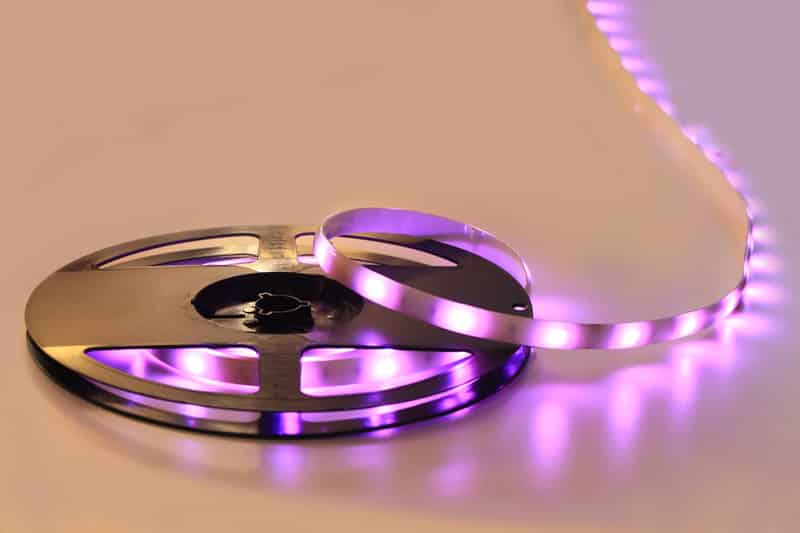
The flexibility of LED strips makes them the perfect option for setting the mood in any room. While these LED strips won’t perform as well when you’re using them as the only source of illumination, their performance is unmatched when it comes to optimizing the ambiance in your house. So, if you already have a primary source of light in the house, going with some LED strips will help you maximize the lighting effects in the room.
A common question that owners often ask is whether or not you can connect different LED light strips together. The following details will help clear up this confusion on connecting different LED light strips together.
Can You Connect Different LED Light Strips Together?
While it is possible to connect different LED light strips together, it is not a smart idea, and you can potentially run into some safety hazards. So, you should stick with only one type of LED strip if you want to connect huge strands. Otherwise, you will struggle with performance consistency, and the LED strips will end up getting damaged. For this reason, you should avoid experimenting with different products.
However, if you do wish to try your luck with different LED light strips, then there are a few factors that need to be considered. The first thing that you need to keep track of is the voltage demands of both LED strips. In order to connect different options with each other, you need voltage requirements to match. Otherwise, the LED strips will get burnt out, and you risk a fire hazard in the room.
Along with the voltage demands, you need to keep track of the control system, resistance, orientation of the RGB channels, and finally, the polarity. Each brand brings a diverse mix of these factors, and the majority of times, they are not compatible with other strips. So, even if you think that the voltage demands are compatible, nothing can be said about all the factors mentioned here. So, instead of testing your luck and destroying the LED light strips, just buy another set of the same brand.
Even if somehow, you find two sets of lights that provide compatibility in all of these factors, it would just be inconvenient to control the LED light strips separately. You will have to rely on different controllers, and the colour options from both brands will likely differ by a small margin. So, you will just be annoyed with the inconvenience and the colour differences.
Some owners believe that all of these issues can be bypassed when you’re using white light strips. However, that is not the case. If you browse the community forums for a while, there is no deficiency of customers mentioning flickering issues after trying to connect different LED strips together. So, there is just no point in connecting more than one brand of LED light strips together. There is no value to be realized, and you will be wasting money as both LED light strips will end up getting damaged in the process.
What Are Some Major Safety Concerns with Connecting Different LED Light Strips?
The biggest safety concern related to connecting different LED light strips relates to fire hazards. The difference in voltage, polarity, and resistance will just burn out the insulation material, and the spark will start a fire in your room. Even if the voltage difference is not that substantial, it is not that rare for the LED lights to burn out and start a fire. So, the fire hazard is the biggest risk you will realize by connecting different LED light strips together without checking the voltage compatibility.
Other than that, you will be losing a lot of money on the light strips, and there will be difficulties in controlling the LED lights. For all these reasons, it is just not viable to connect different LED light strips together. So, even though there is a possibility of connecting different LED light strips together, it is just not a smart idea to go through this project. You should only connect the LED light strips from the same brand and the same model. That way, you can easily extend the lighting without having to worry about any safety concerns.